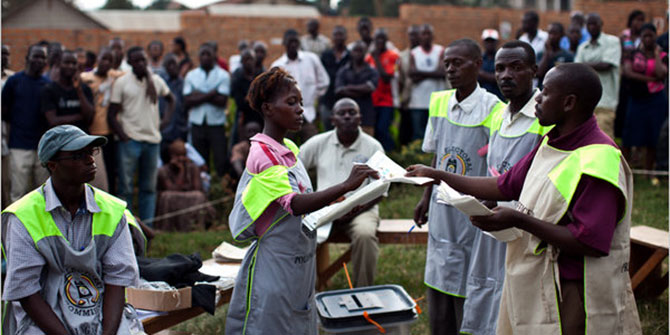SOAS’s Christina Wolf says that while the book China & Angola: A marriage of convenience is very informative, it also leaves the reader with many questions.
China’s economic rise has caused a vivid debate on its systemic impact on the world economy. In this context, China’s economic relations with sub-Saharan Africa have attracted increasing scholarly attention and rightly so: after two decades of lost development, it is highly relevant to know whether exchange with China played a role in the acceleration in economic growth in sub-Saharan Africa and, if so, whether this is sustainable.
China and Angola: a marriage of convenience addresses this question using the example of Angola, one of China’s major African partners. The book comprises a selection of essays initially presented at a conference in Luanda in 2011. Its overarching objective is to study the policy challenges associated with the growing importance of Chinese credit lines and other forms of Chinese engagement in Angola. This is an important undertaking.
The book, in many ways, side-steps the polemic of both academic and lay discussions on this topic and attempts to explore China’s impact systematically. Contributors discuss, in turn, the history and evolution of Sino-Angolan relations, the role of political elites and of the oil sector, Angolan housing policy, Chinese firm practices and perceptions of Angola in Chinese civil society.
The various articles correctly underline that – contrary to Western perception – Sino-Angolan cooperation is not per se rogue and that there are, indeed, important synergies between the two countries: China needs energy and hard commodities, as well external markets for its construction and manufacturing firms, while Angola needs substantial investment and provision of public goods to push forward economic and political transition and catch-up with advanced economies. To give an example of this type of synergy, oil-backed credits from China have financed a large-scale housing programme in the civil war ravaged country. In short, as Chris Alden notes in his introduction, China can provide welcome alternatives to Angola’s relationships with Western governments and investors that never were free of problems, either.
Yet, as Lucy Corkin forcefully shows, the policies resulting out of Sino-Angolan cooperation often lack developmental impact. Corkin makes the strong case that Angola’s elites use the Chinese presence to strengthen their own patronage networks and therefore do not promote policies that support inclusive and sustainable growth. Indeed, throughout the book there is a strong scepticism against the ruling party’s commitment to policies promoting growth that also reaches the wider population.
More often than not, the reader does not learn which precise policies have been deployed to mediate China’s presence in Angola, just as there is no assessment of what has been achieved through them. For instance, several articles highlight that Chinese projects do not employ as much local labour as agreed (there is a 30% target), even though they hire more young and unskilled workers than Western companies. However, there is no further analysis of why this is the case and how this problem has been addressed by policy.
To the extent that this can be considered a limitation, it is one that follows from the format of the book comprising short individual essays, which tend to provide, individually, similar background information on the Sino-Angolan relations and then stress a number of core observations. As a result, a theme emerges: the essays point to a lack of transparency in Sino-Angolan cooperation, therefore the results of this cooperation are not held to be sustainable irrespective of their own merits. For instance, analysing China’s role in Angolan housing policy, Sylvia Croese argues that Angola’s housing policy is flawed because it is too centralised and fails to take into consideration people’s real needs and capacities – but, in a country ravaged by civil war, how many new homes were built and made available to the wider population? And did this result in an improvement in living standards, despite corruption and a lack of transparency and inclusiveness?
Elsewhere, Assis Malaquias concludes that “challenges of transparent governance will dominate Angolan politics in the foreseeable future”, strongly implying that Sino-Angolan cooperation will not be helpful in this regard. But are transparent governance and a more inclusive process sufficient to foster development? Which other policies are needed to divert oil income into productive investments? What is, for instance, the role of income redistribution, industrial and social policy? And then, given the political economy constraints identified by Corkin, how can Angola get there?
These questions remain open – a concession, certainly, to the format of the publication – and so the reader is left with much relevant background information, a number of highly relevant observations on the political economy of Sino-Angolan exchange, but also with a lot of questions about the overall impact of this exchange as well as whether and how it can be used to foster economic development in Angola.
China and Angola: a marriage of convenience, edited by Marcus Power and Ana Cristina Alves, Published by Fahamu books.







The Sino-Angolan relationship is a mutually beneficial one. The Chinese government however has a tendency not to intervene in the political issues of their African partners for as long as they get the resources they want. It is therefore imperative that the Angolan government allocates resources in a more inclusive manner.